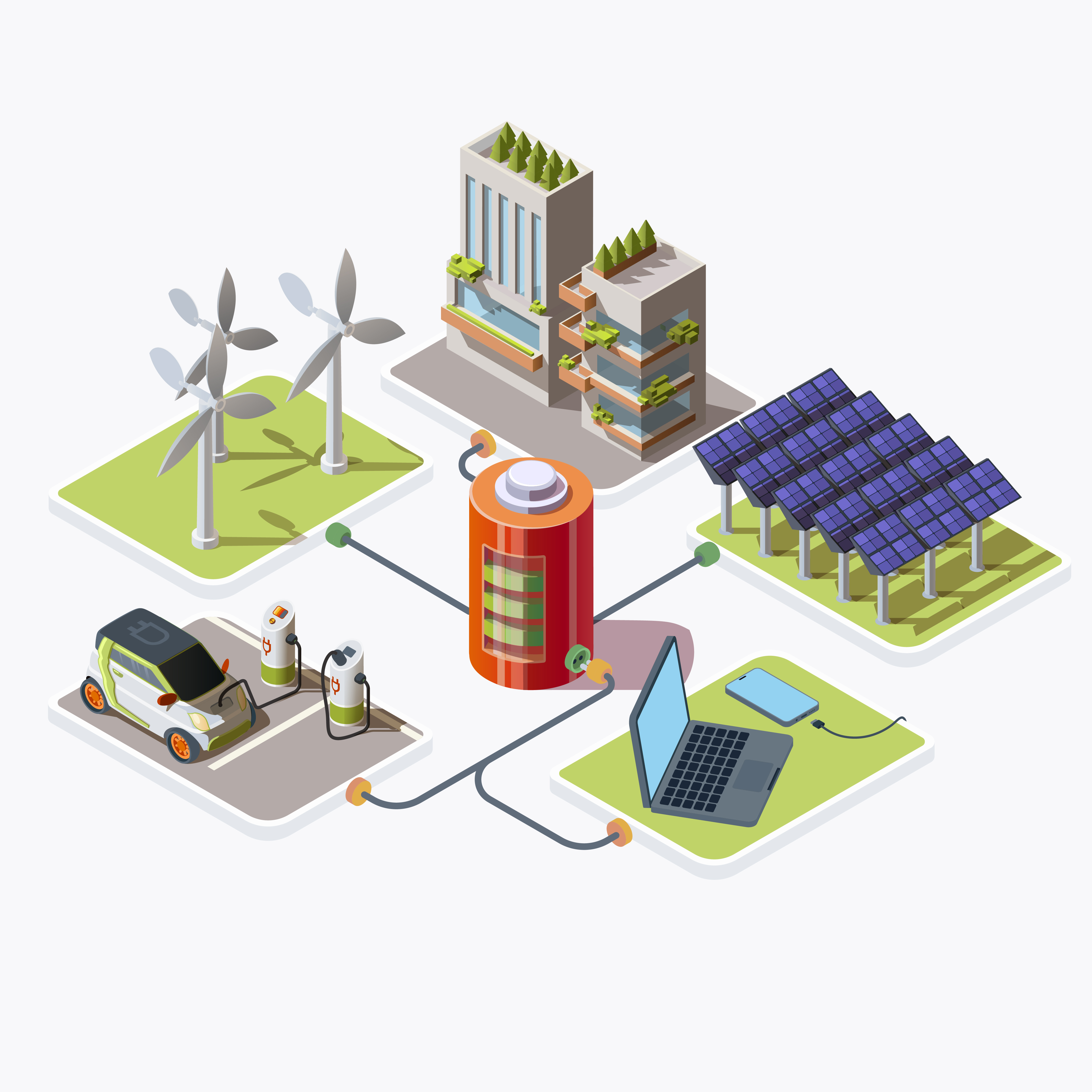Table of Contents
ToggleIntroduction
Renewable energy installation has gained significant traction in recent years, driven by growing concerns about climate change and the need for sustainable energy sources. As individuals, businesses, and communities seek to transition towards cleaner energy alternatives, government incentives play a crucial role in facilitating the adoption of renewable energy technologies. These incentives, offered at the federal, state, and local levels, provide financial support and incentives to encourage investment in renewable energy projects such as solar, wind, hydroelectric, and geothermal installations. In this comprehensive guide, we will explore the various types of government incentives available for renewable energy installation and provide practical tips for navigating the incentive landscape effectively.
Types of Government Incentives
Government incentives for renewable energy installation come in various forms, each designed to promote different aspects of renewable energy adoption. Understanding the different types of incentives is essential for maximizing the benefits of renewable energy projects. Tax credits are one of the most common forms of government incentives for renewable energy installation. These credits allow individuals and businesses to offset a portion of the costs associated with purchasing and installing renewable energy systems. Federal tax credits, such as the Investment Tax Credit (ITC) and the Production Tax Credit (PTC), provide incentives for solar, wind, and other renewable energy projects.
Rebates are another popular incentive offered by governments to encourage renewable energy adoption. Unlike tax credits, which are applied against taxes owed, rebates provide direct cash incentives to offset the upfront costs of renewable energy installations. Rebate programs may be offered at the federal, state, or local level and are often administered by utility companies or government agencies.
Grants are financial awards provided by governments or non-profit organizations to support renewable energy projects. These grants may cover a portion of the project costs, including equipment purchases, installation, and associated expenses. Grant programs are typically competitive, with applicants required to submit detailed proposals outlining the project’s objectives, budget, and expected outcomes.Feed-in tariffs (FITs) are regulatory mechanisms that provide renewable energy producers with guaranteed payments for the electricity they generate and feed into the grid. Under FIT programs, renewable energy producers are paid a fixed rate for each kilowatt-hour of electricity produced, providing a stable revenue stream and incentivizing investment in renewable energy generation.
Net Metering Programs
Net metering programs allow renewable energy system owners to offset their electricity bills by selling excess electricity generated by their systems back to the grid. Under net metering arrangements, renewable energy producers receive credits for the surplus electricity they generate, which can be used to offset future electricity consumption. Net metering programs vary by jurisdiction but are commonly offered at the state or utility level.
The federal government offers a range of incentives to support renewable energy installation and promote clean energy adoption nationwide. These incentives include tax credits, grants, and loan programs administered by federal agencies such as the Department of Energy (DOE) and the Internal Revenue Service (IRS). Federal tax credits provide financial incentives for residential and commercial renewable energy installations. The Investment Tax Credit (ITC) offers a credit of up to 26% of the total cost of qualifying renewable energy systems, including solar, wind, and geothermal installations. The Production Tax Credit (PTC) provides a per-kilowatt-hour tax credit for electricity generated from qualifying renewable energy sources, such as wind and biomass.
In addition to tax credits, the federal government may offer rebate programs to support specific renewable energy initiatives. These programs may be administered by federal agencies such as the Department of Energy (DOE) or the Environmental Protection Agency (EPA) and provide direct cash incentives for renewable energy projects, energy efficiency upgrades, and sustainable practices.Federal agencies such as the Department of Energy (DOE) and the Department of Agriculture (USDA) offer grant programs to support renewable energy research, development, and deployment. These grants may be awarded to universities, research institutions, businesses, and non-profit organizations engaged in renewable energy projects that align with federal priorities and objectives.
State-Level Government Incentives
Many states offer their own incentives to promote renewable energy adoption and support clean energy initiatives within their jurisdictions. These incentives may include tax credits, rebates, grants, and performance-based incentives tailored to the unique needs and priorities of each state. States may offer tax credits and incentives to encourage renewable energy installation and investment. These incentives may include state-level versions of federal tax credits, as well as additional incentives such as property tax exemptions, sales tax exemptions, and income tax deductions for renewable energy projects.
State rebate programs provide direct financial incentives to offset the costs of renewable energy installations. These programs may be funded by state governments, utility companies, or other organizations and are often designed to promote specific technologies or target underserved communities. State agencies and utility companies may offer grant programs to support renewable energy projects and initiatives. These grants may be awarded on a competitive basis and can cover a range of expenses, including equipment purchases, installation costs, and workforce development.
Local governments, including cities, counties, and municipalities, may offer their own incentives to promote renewable energy adoption and support sustainability initiatives within their communities. These incentives may complement state and federal programs and address local priorities and objectives. Local tax incentives and rebates may be available to property owners who install renewable energy systems, such as solar panels or wind turbines. These incentives may include property tax exemptions, sales tax exemptions, or tax credits for renewable energy investments.Municipalities may offer grant programs to support renewable energy projects and initiatives within their jurisdiction. These grants may be funded by local government budgets, utility revenues, or other sources and can provide financial assistance for renewable energy installations, energy efficiency upgrades, and sustainability initiatives.
Local governments may launch initiatives to promote community solar projects and increase access to renewable energy for residents and businesses. These initiatives may involve partnerships with utility companies, non-profit organizations, or community groups to develop and implement community solar programs that benefit underserved communities and support local economic development.
Eligibility Criteria and Application Process
To qualify for government incentives for renewable energy installation, applicants must meet certain eligibility criteria and follow specific application procedures. Understanding these requirements is essential for maximizing the chances of success and securing financial support for renewable energy projects. Government incentives for renewable energy installation typically have eligibility criteria related to project size, technology type, and location. Applicants must ensure that their projects meet these requirements to qualify for incentives and avoid potential disqualification.
Applying for government incentives for renewable energy installation involves several steps, including project planning, documentation preparation, and submission of the application. Following a step-by-step guide can help streamline the application process and increase the likelihood of success.Government incentive applications require various documentation and paperwork to support the project proposal and demonstrate compliance with eligibility criteria. Common documentation requirements include project plans, cost estimates, equipment specifications, and proof of ownership or authorization.
While government incentives for renewable energy installation offer significant benefits, they may also present challenges and considerations that applicants must address to maximize the effectiveness of incentive programs. Government incentive programs for renewable energy installation may have limitations or drawbacks that applicants should be aware of, such as funding constraints, eligibility restrictions, and bureaucratic processes. Understanding these limitations can help applicants manage expectations and navigate the incentive landscape effectively.
Navigating the incentive process for renewable energy installation can be complex and time-consuming, requiring careful planning and coordination. Common challenges include understanding eligibility criteria, preparing documentation, and meeting application deadlines. Addressing these challenges proactively can increase the likelihood of success and maximize the benefits of incentive programs. To maximize the benefits of government incentives for renewable energy installation, applicants should develop a comprehensive strategy that aligns with their project goals and objectives. This strategy may include leveraging multiple incentive programs, optimizing project designs, and engaging with stakeholders to build support for the project.
Case Studies and Success Stories
Real-world examples of successful renewable energy projects can provide valuable insights and inspiration for applicants seeking to navigate government incentive programs effectively. Case studies highlighting successful renewable energy projects that have utilized government incentives can demonstrate the potential benefits and opportunities of incentive programs. These examples may include residential, commercial, and community-scale projects across different renewable energy technologies and geographic regions.
Testimonials from stakeholders involved in renewable energy projects, such as project developers, property owners, and community leaders, can provide firsthand perspectives on the benefits and challenges of navigating government incentive programs. These testimonials can help applicants gain insights into the practical aspects of applying for and implementing renewable energy projects.
Drawing lessons learned and best practices from successful renewable energy projects can help applicants improve their strategies and increase the likelihood of success in navigating government incentive programs. Key takeaways may include tips for project planning, application preparation, and stakeholder engagement.
Conclusion
Government incentives play a critical role in promoting renewable energy installation and accelerating the transition towards a clean energy future. By understanding the different types of incentives available, navigating eligibility criteria and application processes, and addressing common challenges, stakeholders can maximize the benefits of incentive programs and drive sustainable energy development. With strategic planning, collaboration, and innovation, government incentives can help unlock the full potential of renewable energy technologies and create a more resilient, equitable, and sustainable energy system for future generations.
FAQs
What are government incentives for renewable energy installation?
Government incentives for renewable energy installation are financial benefits provided by governments at the federal, state, and local levels to encourage investment in renewable energy technologies such as solar, wind, hydroelectric, and geothermal.
Why are government incentives important for renewable energy adoption?
Government incentives play a crucial role in promoting renewable energy adoption by reducing the upfront costs of installation, providing financial incentives for renewable energy production, and supporting the growth of the renewable energy industry.
What types of government incentives are available for renewable energy installation?
Government incentives for renewable energy installation include tax credits, rebates, grants, feed-in tariffs, net metering programs, and other financial incentives designed to offset the costs of renewable energy projects and encourage investment in clean energy technologies.
Who is eligible for government incentives for renewable energy installation?
Eligibility for government incentives for renewable energy installation varies depending on factors such as project size, technology type, location, and applicant type. Homeowners, businesses, non-profit organizations, and government entities may be eligible for different incentives.
How can I apply for government incentives for renewable energy installation?
To apply for government incentives for renewable energy installation, applicants typically need to submit an application to the relevant government agency or utility company. The application process may involve providing documentation such as project plans, cost estimates, and proof of eligibility.







